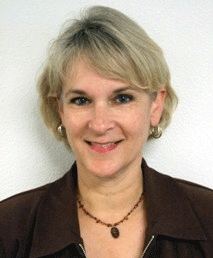by Laura Nagle
Brain damage caused by prenatal exposure to alcohol can result in behaviors that increase an individual’s likelihood of becoming involved in the justice system. This article will provide a foundation of knowledge about the effects alcohol can have on a developing brain, and the connection between brain function and behavior. Future articles will continue to explore the impact of FASD on the criminal justice system.
Brief Overview of an Enormous Issue
Fetal Alcohol Syndrome, the leading known cause of mental retardation in the United States, affects a small but significant number of the country’s population. Prenatal exposure to alcohol, however, is much more prevalent than just the number of individuals with a diagnosis of FAS. Many individuals with Fetal Alcohol Syndrome (FAS) and a majority of individuals with Fetal Alcohol Spectrum Disorders (FASD) remain undiagnosed, wrongly identified and untreated.
The damage caused by prenatal exposure to alcohol is irreversible and the financial and emotional costs to individuals, families and communities are enormous. Conservative estimates give an annual cost of three million dollars to support and maintain an individual with FASD throughout their lifetime, including special education, medical costs, respite care, foster care, legal expenses and mental health care (Harwood, H. 1998. The economic costs of alcohol and drug use in the United States. Bethesda MD) Families, service systems and communities cannot afford this expense; on the other hand, without a large network of these support services, individuals with FASD will develop damaging secondary disabilities that affect the individual, the family and the larger community. All service systems, including the justice system, are affected by the challenges of serving clients living with FASD.
Most individuals living with FASD are not fortunate enough to have a diagnosis. This disability can be an invisible one; a person with a FASD often has an IQ in the average range and no obvious facial characteristics. To make the situation even more confusing, many people with FASD “talk better than they think”. From the outside, they appear to be competent. Parents, caregivers and teachers experience burnout and frustration towards this child who “just doesn’t get it”. Service providers and employers feel irritated and angry at this teenager or adult who “just doesn’t care” or “refuses to follow through”. Well-meaning and supportive people try as hard as they can to help, and then give up. Without understanding the underlying brain damage, traditional strategies for teaching, intervening and supporting will not be effective.
Brain dysfunction is the primary disability of FASD, and it is invisible. It manifests itself in behaviors such as the following:
- difficulty understanding cause and effect relationships
- difficulty understanding abstract concepts and phrases
- inability to change behavior depending on the situation
- inconsistent memory / poor short term memory
- chronic poor judgement
If we do not understand FASD, we assume that the individual could do better if s/he “only tried harder”. As professionals, it is our responsibility to educate ourselves about the impact this invisible disability has on our community as a whole. Learning to recognize warning signs and respond accordingly can make a tremendous difference for the individuals and families we work so hard to support.
FASD: Background Information
Researchers from the University of Washington in Seattle first introduced the term “Fetal Alcohol Syndrome” in 1973 to describe a pattern of characteristics and birth defects found in infants born to mothers addicted to alcohol. These characteristics in the newborns included central nervous system damage, a specific pattern of facial abnormalities and growth deficiencies. Since 1973, researchers around the world have continued to come to the same conclusion: alcohol can cause specific and extensive damage to a developing fetus.
When FAS was first identified in 1973, only the most extreme cases were included in the definition. Research focused on children exposed to heavy amounts of alcohol throughout the duration of pregnancy; these children were born with mental retardation or a severe developmental delay. In the years after FAS was first identified, research broadened to include the impact of light drinking, moderate drinking and sporadic binge drinking during pregnancy.
Alcohol and Fetal Development
In order to understand this disability, we must understand the way alcohol affects the developing fetus. The most important thing to remember is this fact: Alcohol can affect anything that is developing at the time that alcohol is present in the fetus’ body. And what develops every single day of gestation? The brain. Every time alcohol is present the developing brain can be affected.
Fetal Alcohol Spectrum Disorders can only be caused by alcohol consumption during pregnancy. Drinking by a male before conception cannot cause this particular disability, nor can drinking by a female before conception. However, many women do not realize that they are pregnant until well into the second month of pregnancy. Significant damage can be done if alcohol is consumed during the short period of time before a woman knows she is pregnant. A prevention message is this: If you’re pregnant, don’t drink. If you drink, don’t get pregnant.
The Institute of Medicine’s 1996 Report to Congress states: “Of all the substances of abuse, including heroin, cocaine and marijuana, alcohol produces by far the most serious neurobehavioral effects in the fetus, resulting in life-long permanent disorders of memory function, impulse control and judgment.” Since alcohol is a legal drug, many people do not realize the extent of the damage it can cause to a developing fetus.
There is no time period where the fetus is safe from the effects of alcohol. Alcohol is classified as a “neurobehavioral teratogen” because it produces Central Nervous System (CNS) damage, which causes brain damage and modified behavior. According to Dr. Ann Streissguth at the University of Washington’s Fetal Alcohol and Drug Unit, the neurobehavioral effects of alcohol can be observed at levels of exposure that produce no physical abnormalities, due to the fact that it takes a higher dose of a neurobehavioral teratogen to produce physical malformations than it does to cause CNS damage.
The facial characteristics of Fetal Alcohol Syndrome (elongated philtrum, thin upper lip, small eye sockets) are directly connected to alcohol exposure in early pregnancy. For example, the philtrum and upper lip form around Day 19 of pregnancy. If alcohol is not present in the fetus on that particular day, the identifiable facial characteristics of FAS will not be present. Therefore, if an individual does not have those facial features of Fetal Alcohol Syndrome, that only tells us that alcohol was not present in sufficient amounts around Day 19 of pregnancy to cause that damage.
Understanding the complex specificity of the many regions of the brain will make it easier to see a link between behavior and brain function in individuals with FASD. For example, the frontal lobe of the brain controls the following functions: impulse control, judgment, regulation of emotions. What would behaviors look like if this brain region didn’t function properly? Many times this is an invisible disability that manifests itself through behavior.
“He just doesn’t get it.”
Since alcohol affects cell growth at the precise moment of exposure, every single individual with FASD has different challenges, abilities and “quirks.” It is impossible to compile a behavioral checklist, due to the varying manifestations of alcohol exposure to the many regions of the brain. However, there are several characteristics common to many children, adolescents and adults prenatally exposed to alcohol.
Difficulty With Abstract Thinking: Many people with FASD experience the world in a very concrete and literal way. As children, most of us were not taught to think abstractly – we learned to understand abstractions inferentially. For example, one paper dollar is the same as four quarters, even though four is a bigger number than one. The same number, one, can also represent “one television program,” “one feature-length movie,” “one day,” “one hour” and “one year.” From a young age, we were able to hear the concrete number “one” and distinguish the abstractions of money, value and time.
Due to brain injury, most people with FASD cannot understand abstractions without being taught in a concrete way. Start paying attention to the words and phrases that we use. It’s surprising how many of them are abstract. “Behave.” “Act your age.” “Don’t get smart with me.” “Do the right thing.” “Drink responsibly.” “Practice safe sex.” In a Kentucky school, the principal told a 7th grade student, “Don’t let me down.” The student responded, confused, “But you’re standing on the ground.” This student with FASD was suspended for “smarting off” to the principal. In reality, he was responding to a concrete phrase that didn’t make any sense to him.
Think about all of the abstract concepts, both subtle and overt, that we have to understand in order to get through our own day relatively successfully. Most of these abstractions are unspoken, and require us to “read” our environment and infer meaning based on the situation.
- Appropriate dress. (If the policy says I can’t wear jeans, that includes jean shorts and denim skirts. No Tube Tops is implied, not stated. Appropriate dress is different for the staff picnic than it is for a board meeting.)
- Punctuality. (Don’t be late. But, it’s better to be late than to not show up at all.)
- Relationships With Co-Workers. (I talk to co-workers differently in the break room than I do at a business meeting. Even if co-workers are friendly to each other, it isn’t the place to reveal too much personal information.)
- Ownership. (At the office, my pen is mine and I can take it home without getting in trouble. The computer on my desk is also mine, but if I take it home, I get in trouble. Even though no one is touching the boxed lunch in the refrigerator and no one’s name is on it, it still belongs to someone and I shouldn’t eat it.)
Most of our social rules and expectations are unspoken. Imagine trying to navigate all the layers of “personal space” “time management” “body language” or “organizational hierarchy” without understanding any of the abstractions or subtleties that accompany them.
Difficulty Generalizing Information from One Setting to Another: A healthy, typical brain is able to learn information and then transfer that information to a similar, yet different situation. For example, we learn addition and subtraction from worksheets, but are then able to use those skills in the “real world” to balance a checkbook or stay within a grocery budget. People with FASD have a hard time taking information learned in one setting and applying it elsewhere.
- Austin, a young man with a FASD was caught stealing chocolate milk and a candy bar from a gas station. His parents, trying very hard to be concrete, told him that it was wrong to take things from the gas station. He wasn’t allowed to go to the gas station with his friends anymore. Two weeks later he stole shoelaces from Kmart. When questioned, he said, “But I didn’t go near the gas station.” He truly didn’t see the similarity between the situations.
- Nora, a young woman with a FASD, got her driver’s license, and often helped her grandmother by driving her to the post office and the bank. A friend asked Nora to help her out by driving the car while a group of friends robbed a bank. When they got caught, Nora was arrested as an accomplice. She said, “I was just doing a favor for a friend who needed a ride.” She didn’t see the difference between driving her grandmother on an errand and driving a friend on a robbery.
- Justin, a young man with a FASD, went to the grocery story for his mother to pick up milk and bread. He returned, saying “They don’t have milk and bread.” Confused, his mother went back to the store with him, and discovered that their regular grocery store had been remodeled, changing the familiar layout. When Justin didn’t find the milk or the bread in their usual places, he came home, saying that the store didn’t have any. He wasn’t able to generalize the fact that ALL grocery stores have milk and bread.
Without understanding the brain dysfunction, this behavior looks like “no common sense” or “a smart aleck.” What 24-year-old with an average IQ wouldn’t look around the store until he found the milk and bread? People with FASD often appear much more competent than they truly are, so friends, family members and outsiders don’t understand the severity of the disability.
Problems Sequencing / Organizing Information: Children, adolescents and adults with FASD often have difficulty organizing tasks without assistance. For example, if we have an appointment at 11:00 in the morning, we are able to arrange our activities to accommodate our schedule. We know what time we need to leave in order to be on time for our appointment, depending on a number of factors: if we’re driving or walking, if it’s raining, if it’s rush hour, if we have to fill up the car with gas first. We are able to calculate time in our head and organize ourselves in order to be on time.
A person with a FASD may have every intention to be on time or complete a task as required, but the end result may not show that intention due to the difficulty of getting all of the steps in place. Instructing a person with a FASD to “clean your room” will only lead to success if specific, written step-by-step instructions are provided. (For example: First, pick up your dirty clothes. Carry them to the laundry room. Next, hang your clean shirts in the closet. Put your clean socks in the drawer. Then, bring dirty dishes and glasses to the kitchen). Even with written specific tasks, they may well need someone to go over the instructions one at a time with them. Non-compliance or failure to complete a task may actually be an inability to plan, sequence and organize.
Difficulty Predicting Outcomes: People with FASD generally have a hard time understanding cause and effect relationships. This makes sense when we understand the brain’s difficulties with time, abstractions and generalizing information. Predicting future outcomes requires all of these skills, plus the ability to remember lessons learned from the past. People with FASD often do not have the benefit of learning from their mistakes, and will often repeat similar mistakes over and over. Without understanding the brain dysfunction, this looks like a person who may be “sociopathic” and “just doesn’t care”.
- Will, a young adult with a FASD, was making a box of macaroni and cheese. After he had boiled the pasta, he realized that he was out of milk. His girlfriend had just left for work and he didn’t have a car, but he saw his neighbor’s car sitting in the driveway next door. When he returned from the grocery store, the neighbor had called the police. Will said, “But I didn’t steal the car. I brought it right back.” He didn’t understand that someone would see the car missing and report it stolen, because he knew that the car was safe the whole time.
- Tony, a young man with a FASD was upset with his boss for making him stay late one afternoon to fill in for a co-worker, so he called in a bomb threat to the store later that evening. “I didn’t really have a bomb. I just wanted to show him what happened when he messed with me,” he said, when he got caught. He couldn’t think ahead to the consequence of making such a threat.
Slow Intake / Output of Information: Alcohol can affect a developing brain in many ways. One of the things it does is decrease the number of cells, or neural pathways, in the brain. This means that it physically takes more time for information to travel in and out of the brain. With the rapid pace of our daily life, this sometimes means that people with FASD only hear every fourth or fifth word we say. Imagine if this is what you heard:
You… right… Anything…. can… be… you …court…. You…right …attorney…one … the police…cannot ….one …..appointed . Understand… you?
DO YOU UNDERSTAND?
Often, when we are trying to explain something to a person who doesn’t seem to understand, we try to explain it better and better, using more words and talking faster. For a person who has a slow intake of information, this makes it harder and harder for the brain to “catch up.” Many people with FASD learn to nod and act as though they heard and understood the information to avoid having it repeated over and over, faster and faster. It might take an alcohol-affected brain fifteen seconds to come up with an answer to a seemingly simple question. Without understanding the brain dysfunction, it looks as though the person is avoiding the question or ignoring the questioner. In reality, the individual may need much more time than a person with a typical brain to respond to questions and conversation.
Sensory Overload: Due to the underdevelopment or overdevelopment of nerve cells, people with FASD are often affected by environmental factors such as bright lights, noises or distractions because the alcohol-affected brain is not able to filter out these external stimuli.
Behavior is often directly related to sensory overload. Imagine that you’re driving home from work after an especially long day. You’re hungry because you didn’t have time for lunch, and you’ve had too much coffee, so you’re a little shaky. The sun is starting to set, and it’s glaring through the windshield right into your eyes. It’s hard to see the road and the stoplights. Your favorite song is on the radio, but it’s fading in and out, and you can barely hear the song through the static. Your pants are too tight around your waist and the backs of your heels have blisters from your shoes. There is a truck right in front of you blowing exhaust at you and driving too slowly.
Can you feel the tension and anxiety growing in your body? This is sensory overload. Now imagine that your neighbor approaches you as you get out of your car to inform you that your dog has stolen his newspaper again. What is your reaction? How is your reaction different based on the state of your body and mind? A person with a FASD reaches this threshold of overload at a much earlier point than a person with a fully functioning brain. Often, behavior occurs as a direct result from this sensory overload and the inability to handle it appropriately.
Poor short-term memory: When developing brain cells die, the missing cells cause gaps or holes to be left in the brain. As information travels through the neural pathways of the brain, sometimes it reaches an area that simply didn’t develop. When information hits one of these holes, the information cannot travel any further, and it disappears. The next piece of information may travel on a pathway that is complete; this leads to an inconsistent memory and an inconsistent skill level. One day a person with a FASD may not remember something, but can recall it perfectly the next day. One day a person with a FASD may be able to complete a task correctly; the next day s/he me be unable to complete the same task. From the outside, the individual appears to be lazy or manipulative; however, the affected brain is simply incapable of performing to the same standard
Lifespan Issues
As discussed earlier, many individuals with brain damage caused by prenatal exposure to alcohol are not identified or diagnosed, and grow up believing the labels of “lazy” “just doesn’t care” and “bad kid.” The individual affected by prenatal alcohol exposure doesn’t understand why s/he keeps making the same mistakes over and over again, why s/he can’t memorize the multiplication tables like everyone else, why s/he can’t ever say or do the right thing. These feelings of frustration and worthlessness lead to secondary disabilities, caused by a failure to address the brain damage, the primary disability.
A study conducted by the University of Washington Medical School’s Fetal Alcohol and Drug Unit looked at secondary disabilities in a sample of 473 individuals with FASD. (Streissguth, A., Barr H., Kogan J. & Brookstein, F. 1996. Understanding the Occurrence of Secondary Disabilities in Clients With Fetal Alcohol Syndrome and Fetal Alcohol Effects FAE. Seattle: University of Washington School of Medicine, Department of Psychiatry & Behavioral Sciences.)The range of IQ in the sample was from 29 to 142, with a mean IQ being 85. Only 16% of all the individuals in the study qualified as having mental retardation; 84% of individuals have an IQ in the “normal” range and therefore do not qualify for services for developmental disabilities.
Six main categories of secondary disabilities are defined:
- Mental Health Problems: 94% of the full sample have experienced mental health problems. During childhood, 60% had a diagnosis or behaviors consistent with ADHD. 23% of the sample have attempted suicide.
- Disrupted School Experience: 70% experienced a disruption in schooling, including suspension, expulsion or dropping out. Common school problems include: not paying attention, incomplete homework, can’t get along with peers, talking back to teacher, and truancy.
- Trouble With the Law: 60% were charged or convicted of a crime. The most common first criminal behavior reported was shoplifting. The most common crimes committed were crimes against persons (theft, burglary, assault, child molestation, domestic violence, running away), followed by property damage, possession / selling drugs, sexual assault and vehicular crimes.
- Confinement: 60% of the sample had spent time in a psychiatric hospital, an alcohol / drug rehab facility or jail / prison. 40% had been incarcerated, 35% had spent time in a psychiatric hospital and 25% had been confined for substance abuse treatment.
- Inappropriate Sexual Behavior: 45% of the sample displayed inappropriate sexual behavior that was repeatedly problematic or had required incarceration or treatment; 65% of the males sampled displayed inappropriate sexual behavior. The most common problematic sexual behaviors include: sexual advances, sexual touching, promiscuity, exposure and masturbation in public.
- Alcohol / Drug Problems: 30% of the sample experienced severe problems with drugs or alcohol.
Additionally, the following information was revealed:
- 80% of adults with FASD lived dependently (with family, in group home or in residential facility)
- 80% experienced significant problems with employment.
- The greatest risk factors for developing secondary disabilities are: IQ over 70 and exposure to violence, and a diagnosis of FAE rather than FAS. Individuals with a lower IQ received more services, support and realistic expectations.
- The greatest protective factors against secondary disabilities are: diagnosis before age 6, eligibility for state Developmental Disabilities services, living in a stable home and protection from witnessing or being victimized by violence.
Working With Individuals Affected by FASD: What Can I Do Differently?
Individuals with FASD learn, communicate and experience the world in a different way; therefore, we need to adapt both our expectations and our style of interaction in order to be effective. Deb Evensen, Director of FAS Alaska, has developed “8 Magic Keys” for working with individuals who have FASD. These 8 concepts are the basis for effective intervention, and can be adapted for any environment or age.
- Concrete. Pay attention to the words and phrases that you use. (For example, think about how the term “Waive your rights” might be misunderstood.) Be as concrete as possible. When in doubt, explain things as if you are explaining to a young child. Check often for deeper understanding. (For example, if you say “Be on your best behavior,” then ask, “What does it mean to be on your best behavior.”) Don’t ever assume that your client understands the deeper meaning, even if s/he can repeat the right words back to you.
- Consistent. Be consistent with the words and phrases that you use. Whenever possible, use the same words and phrases as cues for desirable behaviors. (For example, if you want someone to learn to stop interrupting when another person is talking, and you say “Not now” the first time, “Quiet, please” the second time and “It’s rude to interrupt,” the third time, s/he might not understand that you’re asking for the same behavior each time.)
- Repetition. Memory is a constant problem. Expect to repeat each small piece of information as many times as necessary. Write down as much as you can. Don’t make the individual rely on his or her memory.
- Routine. Changes or transitions are extremely difficult. People with FASD do best when they know what to expect. Discuss any changes in routine and provide reminders and reassurances.
- Simplicity. Remember the KISS rule: Keep it Short and Sweet. People with FASD can become overwhelmed by too many words and too much stimulation. Use as few words as possible and keep the environment simple.
- Specific. Say exactly what you mean. Don’t assume that the individual can “read between the lines” and know all the steps necessary to complete and activity. Tell the person what to do, step by step, even when it seems too obvious. Write down each step so s/he doesn’t have to rely on memory.
- Structure. Structure is absolutely essential to the success of an individual with FASD. Boundaries, limits and a consistent framework help people with FASD make safe decisions and be successful. (For example, a person with a FASD may need a “wake-up call” every morning and a “curfew call” at night to check in.)
- Supervision. People with FASD always need an External Brain in their environment to help them navigate new and unfamiliar situations. Impulse control and judgment will always be challenges. Supervision needs to be constant, and should not be removed when the individual is doing well.
These intervention strategies are simple and can be used to improve communication with individuals with challenging behaviors. Most people with FASD do not show up for services already having a diagnosis. Although a diagnosis is the best thing that can happen for a person with a FASD, this is often a lengthy process. These intervention strategies can be helpful, even before an individual has been assessed for a FASD. If the person has not been prenatally exposed to alcohol, these strategies cannot be harmful. In fact, they are also effective for individuals with other learning disorders.
Conclusion
Fetal Alcohol Spectrum Disorders affect our communities in more ways than we know. Every single system – education, public health, social services, mental health, substance abuse, corrections – feels the long-term impact of prenatal exposure to alcohol. This is an invisible disability; most individuals with FASD appear much more competent than they truly are. In order to effectively meet the needs of clients with FASD, we need to understand the link between brain function and behavior. We would never punish a man who is blind for knocking over the furniture or for reacting out of anger when we rearranged the room without telling him; instead we would take the time to explain the environment in a way that made sense to him. People with FASD deserve similar understanding and consideration.
This is new information and we must educate ourselves about this disability. We dedicate ourselves to giving everything we can to serve our clients and our community to the best of our ability. However, if we do not consider the effects of prenatal exposure to alcohol, we are sometimes missing an important piece of the puzzle.
Kentucky’s FASD Prevention Enhancement Site can provide resources and technical support on this subject. Please visit www.kyfasd.org or contact Laura Nagle (Lmnagle@bluegrass.org) with questions and comments.
*****
Laura Nagle has  worked for Bluegrass Regional MH/MR Board Inc. since 1999, serving as FASD Coordinator since 2001. Laura wrote and coordinated Kentucky’s first community-based federal research grant focusing on FASD, which was evaluated by the University of Kentucky. Laura is a member of a National Association of FASD State Coordinators and led Kentucky to become an affiliate of the National Organization on Fetal Alcohol Syndrome. She has trained over 6000 professionals, including 500 who now act as FASD trainers for their agencies across the state.
worked for Bluegrass Regional MH/MR Board Inc. since 1999, serving as FASD Coordinator since 2001. Laura wrote and coordinated Kentucky’s first community-based federal research grant focusing on FASD, which was evaluated by the University of Kentucky. Laura is a member of a National Association of FASD State Coordinators and led Kentucky to become an affiliate of the National Organization on Fetal Alcohol Syndrome. She has trained over 6000 professionals, including 500 who now act as FASD trainers for their agencies across the state.
 Please join us in welcoming the following new NASJE members:
Please join us in welcoming the following new NASJE members:



 Participants in the training, hosted by the Domestic Violence Prevention Coordinating Council, drew cards to find out their victim’s story — a woman with kids or a single person in a troubled relationship. They then followed the story to stations set up around the room that represented various options for victims, such as court, police, family and friends, the clergy, support groups or the funeral home.
Participants in the training, hosted by the Domestic Violence Prevention Coordinating Council, drew cards to find out their victim’s story — a woman with kids or a single person in a troubled relationship. They then followed the story to stations set up around the room that represented various options for victims, such as court, police, family and friends, the clergy, support groups or the funeral home.